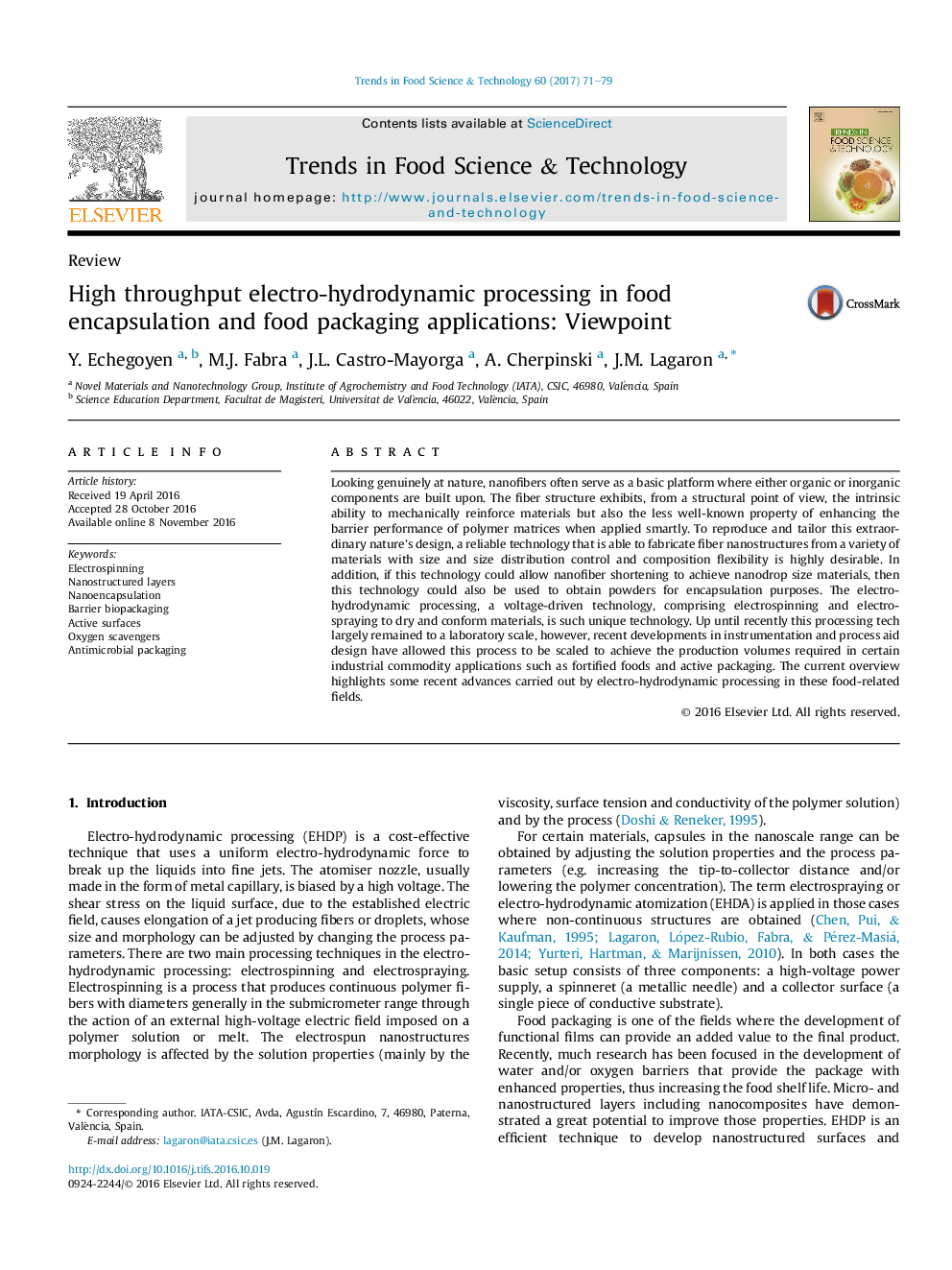| Article ID | Journal | Published Year | Pages | File Type |
|---|---|---|---|---|
| 5523795 | Trends in Food Science & Technology | 2017 | 9 Pages |
â¢A viewpoint of EHDA processing for food packaging applications and food encapsulation is presented.â¢Aspects like scaling up strategies, nanoencapsulation, repellent surfaces or biodegradable materials are described.â¢There is a special focus in the works carried out at our research group.
Looking genuinely at nature, nanofibers often serve as a basic platform where either organic or inorganic components are built upon. The fiber structure exhibits, from a structural point of view, the intrinsic ability to mechanically reinforce materials but also the less well-known property of enhancing the barrier performance of polymer matrices when applied smartly. To reproduce and tailor this extraordinary nature's design, a reliable technology that is able to fabricate fiber nanostructures from a variety of materials with size and size distribution control and composition flexibility is highly desirable. In addition, if this technology could allow nanofiber shortening to achieve nanodrop size materials, then this technology could also be used to obtain powders for encapsulation purposes. The electro-hydrodynamic processing, a voltage-driven technology, comprising electrospinning and electrospraying to dry and conform materials, is such unique technology. Up until recently this processing tech largely remained to a laboratory scale, however, recent developments in instrumentation and process aid design have allowed this process to be scaled to achieve the production volumes required in certain industrial commodity applications such as fortified foods and active packaging. The current overview highlights some recent advances carried out by electro-hydrodynamic processing in these food-related fields.
